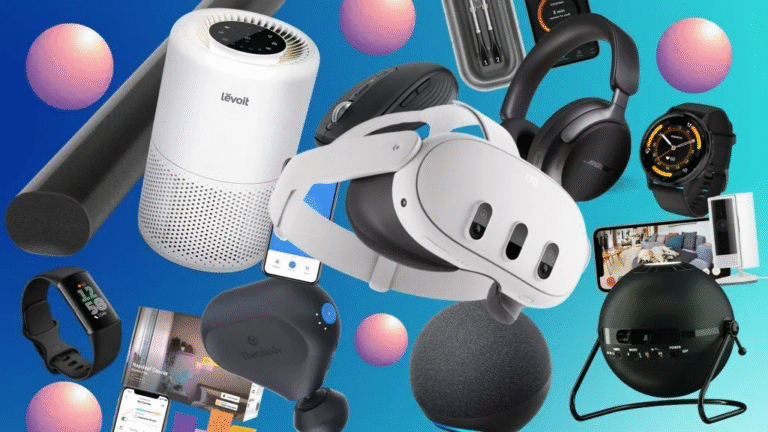Snapdragon vs mediatek techstudify – Comparison Guide
When it comes to mobile chipsets, Snapdragon and MediaTek are two of the most powerful players in the smartphone industry. These chipmakers drive the performance, speed, and energy efficiency of most smartphones in the world today. Whether you’re a casual user or a gaming enthusiast, the chipset inside your phone can drastically influence your experience.
TechStudify dives deep into this battle of giants — Snapdragon vs MediaTek — to help you understand their strengths, weaknesses, and which one might be better for your needs. We’ll compare their performance, graphics, AI, gaming features, battery efficiency, and much more. Both Snapdragon and MediaTek have evolved over the years, competing fiercely in flagship and budget segments alike.
This article aims to provide a comprehensive comparison of these two chipset giants using simple English and the latest SEO practices. Whether you’re a tech enthusiast or an everyday user, you’ll find clear, useful insights. The keyword Snapdragon vs MediaTek TechStudify is naturally integrated throughout.
Performance Comparison: Snapdragon vs MediaTek
Snapdragon chips, especially from the 8-series, offer industry-leading performance in flagship smartphones. MediaTek’s Dimensity series, on the other hand, provides solid competition, especially in mid-range phones. Qualcomm’s custom Kryo cores and better thermal management give Snapdragon the edge in sustained performance.
GPU and Graphics Capabilities
MediaTek uses ARM Mali GPUs, while Snapdragon relies on Adreno GPUs. Adreno usually outperforms Mali, especially in flagship models. Snapdragon’s graphics also tend to deliver smoother frame rates in gaming and video rendering.
AI Processing and Machine Learning
Snapdragon’s Hexagon DSP provides powerful AI features, useful in photography, language processing, and battery management. MediaTek’s APU (AI Processing Unit) has shown rapid growth and performs well in multitasking and AI-camera enhancements.
Use Case: AI in Mobile Photography
Snapdragon chips often deliver faster scene detection and object recognition. MediaTek’s AI features focus more on post-processing and beautification.
Battery Life and Efficiency
MediaTek chips are often built on more power-efficient nodes (like 6nm or 4nm in Dimensity 9200+). Snapdragon chips also prioritize energy efficiency, but real-world battery life depends on software optimization by manufacturers.
Thermal Management and Overheating Issues
Snapdragon processors handle sustained loads better than MediaTek, which can heat up faster under heavy tasks like gaming. However, MediaTek has improved cooling in newer chips like the Dimensity 9200.
Gaming Experience
Snapdragon is favored for gaming because of its high frame rates, stability, and support for features like Snapdragon Elite Gaming. MediaTek is catching up with HyperEngine Technology, offering game optimization and fast network switching.
Camera Support and ISP Capabilities
Snapdragon chipsets usually support higher megapixel cameras and better image processing. Their Spectra ISP supports advanced features like 8K video, HDR, and ultra-fast autofocus. MediaTek offers decent support, especially in the Dimensity line, but tends to lag in raw performance.
5G Connectivity and Network Performance
Snapdragon integrates Qualcomm’s X-series modems which deliver top-tier 5G speeds and broader band compatibility. MediaTek’s 5G modems work well but are slightly behind in peak performance and global band support.
Display Technology Support
Snapdragon supports higher refresh rates (up to 144Hz or more), HDR10+, and QHD+ resolutions, especially in flagship models. MediaTek supports similar features but generally targets mid-range displays.
Wi-Fi and Bluetooth Features
Snapdragon chipsets usually feature the latest Wi-Fi standards (Wi-Fi 6/6E/7) and Bluetooth 5.3+. MediaTek lags slightly but has closed the gap with newer Dimensity chips.
Fabrication and Architecture
Both brands use TSMC and Samsung for manufacturing. Snapdragon has moved to 4nm architecture for flagship chips. MediaTek also uses TSMC’s 4nm node for Dimensity 9200+, improving power efficiency.
Price-to-Performance Ratio
MediaTek offers better value in budget and mid-range segments. Snapdragon is more expensive but justifies the cost with premium performance and features.
Software Updates and Longevity
Snapdragon-powered phones typically receive longer and more consistent software updates. MediaTek has improved in this area, especially in the Dimensity lineup, but still varies by brand.
Market Presence and Global Reach
Qualcomm has a stronger presence in premium markets like the US, UK, and South Korea. MediaTek leads in volume, especially in India, Southeast Asia, and Latin America due to its focus on affordable chips.
Innovation and R&D Investment
Qualcomm invests heavily in research and innovation, especially in AI, VR, AR, and XR. MediaTek has increased its R&D efforts but remains more focused on mass-market solutions.
Customizability for OEMs
Snapdragon provides more freedom for manufacturers to optimize performance. MediaTek SoCs are less customizable but easier to implement at scale.
Compatibility with Custom ROMs and Developers
Snapdragon is preferred by developers due to better source code support. MediaTek is slowly opening up but still faces criticism for closed-source policies.
Benchmarks and Real-World Tests
Benchmark scores often favor Snapdragon, especially in Antutu and Geekbench tests. However, MediaTek’s real-world performance is often closer than numbers suggest, particularly in mid-range models.
Voice and Audio Capabilities
Snapdragon chips come with Qualcomm Aqstic and aptX audio technologies, ensuring crisp audio quality. MediaTek uses similar enhancements but lacks premium audio codecs like aptX Adaptive.
Security and Encryption Technologies
Both support secure boot, Trusted Execution Environments (TEE), and on-device encryption. Snapdragon leads with Qualcomm Secure Processing Unit and hardware-level security.
Support for Satellite Communication (New)
Snapdragon Gen 2 and newer support satellite-based communication features like emergency SOS via satellite. MediaTek announced similar features but has limited devices using it as of now.
AI Voice Assistant Integration
Snapdragon chips support better always-on listening for assistants like Google Assistant and Alexa. MediaTek provides basic integration but lacks advanced low-power listening modes.
Power Management and Charging Speeds
Snapdragon supports Quick Charge, while MediaTek supports Pump Express and fast charging standards like 120W+. Both deliver fast charging, but actual speeds depend on device and battery capacity.
Chip Availability and Supply Chain Stability
Snapdragon chips have better availability in premium segments, whereas MediaTek offers wide-scale availability for OEMs focusing on mid- and low-end phones.
Environmental and Thermal Sensors
Both chipsets support multiple sensors for environmental data, but Snapdragon offers more advanced temperature control in premium devices, enhancing stability during heavy use.
Snapdragon vs MediaTek Comparison Table
| Feature | Snapdragon | MediaTek |
|---|---|---|
| Performance | High-end performance, especially in flagship models | Strong in mid-range, improving in premium models |
| GPU | Adreno GPU – better gaming and graphics | ARM Mali GPU – competitive in budget/mid-range |
| AI & Machine Learning | Hexagon DSP – powerful AI processing | APU (AI Processing Unit) – strong in multitasking |
| Battery Efficiency | Great power management in high-end models | Improved power efficiency in newer chips (e.g., Dimensity) |
| Gaming | Snapdragon Elite Gaming, higher frame rates | HyperEngine Technology, good optimization |
| Camera Support | Advanced ISP (Spectra) – 8K video support | Decent ISP, good in mid-range models |
| 5G Connectivity | X-series modems – better 5G support | Good 5G speeds but fewer global bands |
| Fabrication Technology | 4nm for flagship chips | 4nm for recent Dimensity chips |
| Price-to-Performance Ratio | Premium prices but top-tier performance | Best for budget to mid-range segments |
| Software Updates | Longer, consistent updates | Varies by manufacturer, fewer updates |
| Brand Adoption | Found in flagship devices (Samsung, OnePlus) | Common in budget to mid-range (Xiaomi, Realme) |
| AI Voice Assistants | Better integration with Google Assistant, Alexa | Basic integration, not as advanced |
Conclusion
Both Snapdragon and MediaTek chipsets offer unique advantages depending on the use case. Snapdragon leads in raw performance, gaming, and software support, making it ideal for flagship smartphones. MediaTek excels in value-for-money devices and has made significant strides in AI, 5G, and power efficiency. Whether you prefer flagship speed or budget performance, this Snapdragon vs MediaTek TechStudify guide helps you choose the right chipset for your next smartphone.
FAQs
Which is better for gaming, Snapdragon or MediaTek?
Snapdragon is generally better for gaming due to its Adreno GPU and optimized gaming features.
Is MediaTek good for long-term use?
Yes, especially the Dimensity series, though software updates may be less frequent than Snapdragon.
Does Snapdragon heat up more than MediaTek?
No, Snapdragon usually has better thermal control than MediaTek chips.
Are MediaTek processors slower than Snapdragon?
Not always. Dimensity processors are quite competitive, especially in mid-range devices.
Which chipset supports better 5G speeds?
Snapdragon, thanks to its advanced X-series modems and broader global support.







